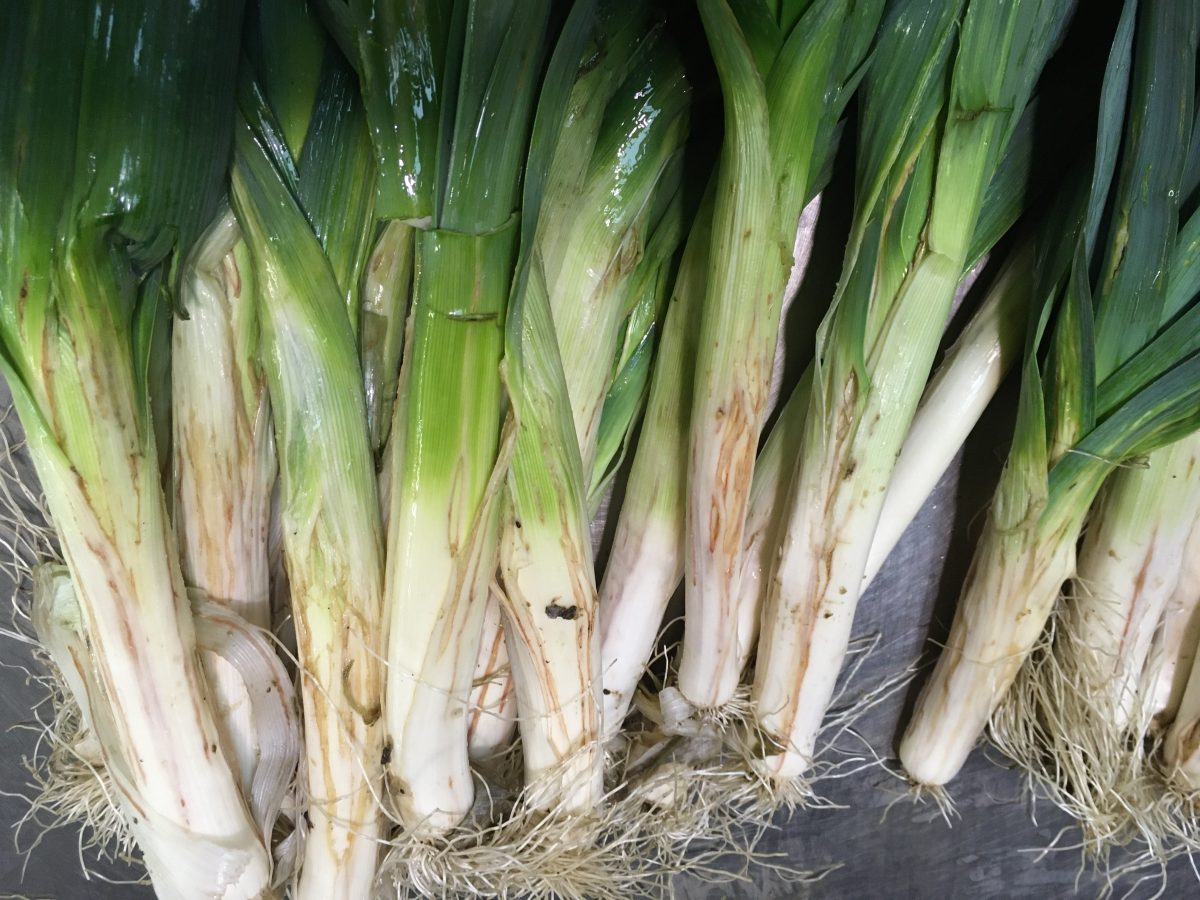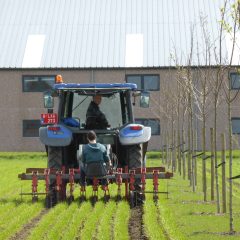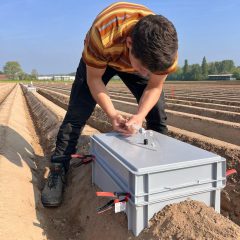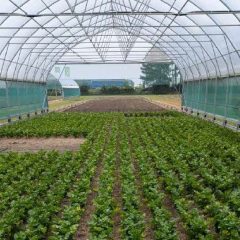Research project Integrated Pest management of the allium leaf miner Phytomyza gymnostoma Loew in leek

General introduction
This research project focuses on a very harmful insect, the allium leaf miner. The aim is to establish a guided and integrated control strategy for this pest fly in leek. The allium leaf miner, Phytomyza gymnostoma, has spread from southern and central Europe to our regions and causes considerable damage in the cultivation of leek in Flanders. Damage is only seen when the leek is being cleaned; usually the leek is unsaleable as a result. Due to the recent nature of this pest (observed for the first time on experimental fields in 2012), there is currently no adequate control strategy available.
Research approach
The following strategic research packages were successfully addressed: (1) the morphological and molecular identification of leaf miners, (2) an unambiguous identification and a direct and user-friendly recognition of the pest in the field, (3) the development of a good monitoring methodology, (4) determining the life cycle and the phenology and setting up a degree-day model, (5) monitoring natural enemies in the field and integrating the knowledge about the population build-up of natural enemies in the management strategy and (6) testing different field management practices and determining the efficiency of various insecticides.
Relevance/Valorization
Several striking realizations and discoveries were made. First, during the identification research it soon became clear that the allium leaf miner has a lot of lookalikes. ILVO drew up a sheet with visible characteristics and great effort was made to develop genetic methods. Using the LAMP (Loop Mediated Isothermal Amplification) method, it became possible to identify the species exactly, and even to recognize eggs and early stages. Using portable devices and a dye, it is possible to perform the analysis in the field and make the DNA visible.
Second, a monitoring system was set up based on yellow sticky traps and chives as indicator plant. The knowledge gained will be incorporated into the current observation and warning system in leeks.
Third, in our current Belgian climate, flies can complete two generations a year. Importantly, as many as 90% of the pupae can survive the winter. In order to reduce this survival, a considerable number of freeze days are needed.
Fourth, the allium leaf miner has natural enemies in Belgium, i.e. parasitic wasps. However, they do not occur in sufficient numbers to suppress this pest. Research has shown promising results in the control of the allium leaf miner using nematodes, but the larvae and pupae appear to be difficult to reach.
Fifth, in terms of control, there are several ways to control them in the field and to process infected plants. Piling up leek waste or (preferably) composting it appears to be an effective way to kill pupae. Insect netting with fine meshes (e.g. Ornata Addu with meshes of 0.8*1mm) appears to be effective, but these are quite expensive and it makes the plants fade and the yield decrease. However, the benefits still outweigh the costs. Three crop sprays with effective pesticides are the most economically advantageous. Especially the products Benevia (120 days regulation) and Mesurol (no longer approved) appear to have a good effect against the larvae.
The formulated advices for the control of the allium leaf miner were included in the operational observation and warning systems in leek cultivation: 'Observations and Warnings' (PCG, PSKW and Inagro) and the Warning Messages Organic (Inagro). Joint blog posts were also written that appeared on the website of the practice centres. In this way, leek growers and sector affiliates were easily reached. The management measures tested were communicated to growers via demonstration trials, trial field visits and articles.









